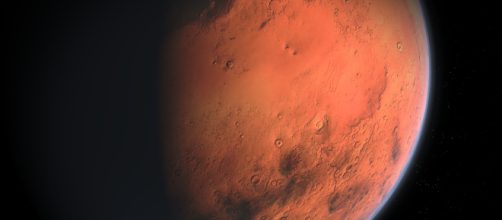Back in 2015, NASA came up with a comprehensive plan of colonization of the ‘Red Planet’ entitled “NASA’s Journey to Mars - Pioneering Next Steps in Space Exploration”. That plan included three stages and a series of exploratory steps that the US Space Agency will undertake to make independent human life possible on that planet. NASA has now come up with a specific plan for one of these steps that seems quite incredible - the use of robotic bees!
Efficient and cheaper
This incredible sounding idea came through a proposal by the researchers at the University of Huntsville Alabama, through NASA’s “Innovative Advanced Concepts program.
The program shortlisted 25 proposals that also included ideas of shapeshifting robots among others.
The idea behind the proposal is to construct and employ flapping robots that would be the size of bumblebees and have cicada-shaped wings. The primary goal of these tiny robots would be to take air samples and detect gases like carbon monoxide and methane, that would give potential signs of life. The Mars rover that is already located on the planet would serve as their communication base and a recharge station.
The reasons behind the plan lie in the fact that Rover, a robot that costs NASA almost $2.5 billion is not only expensive but weighing over 8,5 pounds is very slow in its data gathering necessary to achieve NASA’s goal of colonizing Mars by 2030.
The use of bee-like tiny robots, would not only be cheaper but also more speedy and effective. According to Chang-kwon Kang, Assistant Professor at the Mechanical and Aerospace Engineering of The University of Alabama in Huntsville, as he wrote in a blog post on NASA's site, “Our preliminary numerical results suggest that a bumblebee with a cicada wing can generate sufficient lift to hover in the Martian atmosphere."
NASA has competition in Mars exploration and colonization
One of the reasons NASA is attempting to speed up the process of its exploration of Mars may lie in the fact that it has competition in that respect. The key might be competition with the Russian space agency “Roscosmos,” which recently announced its plan to send an unmanned mission to Mars in 2019.
The other big competition might be from home with Elon Musk and his Space X program which has the colonization of Mars as its end goal. The number of competitors does not stop there. For example, a nonprofit organization “Mars One,” based in The Netherlands, has intentions to establish a permanent human colony on Mars by 2027.
It is then no wonder that NASA is attempting to speed up its plans of Mars exploration with innovative, on-the-edge ideas that would be at the same time be more cost efficient.


